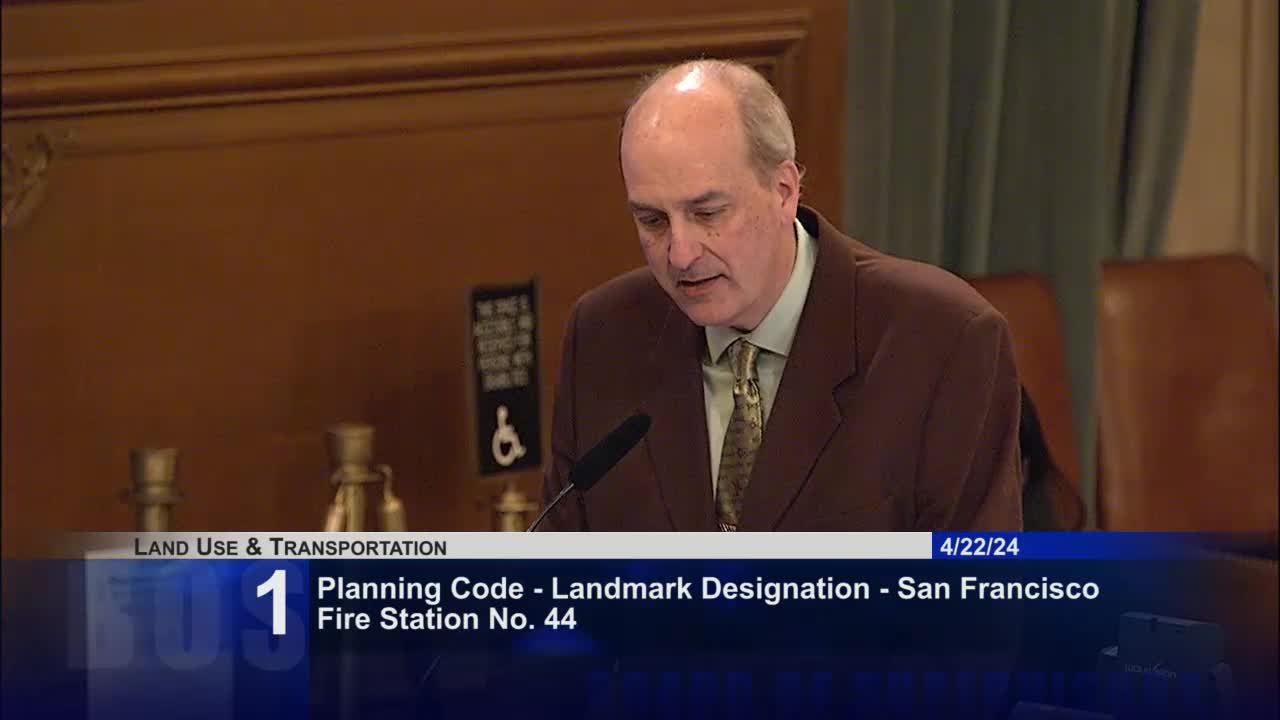Committee recommends zoning changes for Jackson Square and Northeast Waterfront districts
April 22, 2024 | San Francisco County, California

This article was created by AI summarizing key points discussed. AI makes mistakes, so for full details and context, please refer to the video of the full meeting. Please report any errors so we can fix them. Report an error »

In a recent San Francisco County government meeting, officials discussed significant developments aimed at enhancing community landmarks and addressing housing density in historic districts. The meeting highlighted two key agenda items that reflect ongoing efforts to balance preservation with the need for affordable housing.
The first item focused on the recognition of community landmarks, specifically the successful designation of Saint James Presbyterian Church and Fire Station 44 as notable sites in the neighborhood. This initiative, supported by the supervisor's office, aims to foster community pride and identity. The chair of the meeting expressed enthusiasm for a potential celebratory barbecue at Fire Station 44, emphasizing the importance of community engagement in these developments.
The second agenda item involved an ordinance to amend the planning code, which seeks to modify density limits in the Northeast Waterfront Historic District and the Jackson Square Historic District. Supervisor Catherine Stephanie presented the ordinance, which aims to facilitate the construction of more densely populated, naturally affordable housing units while ensuring that the integrity of these historic areas is preserved. This move is part of a broader strategy to address the city's housing crisis by allowing for adaptive reuse of commercial properties into residential units.
The discussions reflect a growing recognition of the need to adapt urban planning policies to meet the demands of a changing population while respecting the historical significance of certain neighborhoods. The committee unanimously recommended the ordinance to the Board of Supervisors, signaling a collaborative effort to find solutions that benefit both residents and the preservation of San Francisco's rich history.
As the city continues to grapple with housing shortages, these initiatives represent a proactive approach to urban development, aiming to create a more inclusive and sustainable community. The next steps will involve further deliberations by the Board of Supervisors, where the implications of these changes will be closely examined.
The first item focused on the recognition of community landmarks, specifically the successful designation of Saint James Presbyterian Church and Fire Station 44 as notable sites in the neighborhood. This initiative, supported by the supervisor's office, aims to foster community pride and identity. The chair of the meeting expressed enthusiasm for a potential celebratory barbecue at Fire Station 44, emphasizing the importance of community engagement in these developments.
The second agenda item involved an ordinance to amend the planning code, which seeks to modify density limits in the Northeast Waterfront Historic District and the Jackson Square Historic District. Supervisor Catherine Stephanie presented the ordinance, which aims to facilitate the construction of more densely populated, naturally affordable housing units while ensuring that the integrity of these historic areas is preserved. This move is part of a broader strategy to address the city's housing crisis by allowing for adaptive reuse of commercial properties into residential units.
The discussions reflect a growing recognition of the need to adapt urban planning policies to meet the demands of a changing population while respecting the historical significance of certain neighborhoods. The committee unanimously recommended the ordinance to the Board of Supervisors, signaling a collaborative effort to find solutions that benefit both residents and the preservation of San Francisco's rich history.
As the city continues to grapple with housing shortages, these initiatives represent a proactive approach to urban development, aiming to create a more inclusive and sustainable community. The next steps will involve further deliberations by the Board of Supervisors, where the implications of these changes will be closely examined.
View full meeting
This article is based on a recent meeting—watch the full video and explore the complete transcript for deeper insights into the discussion.
View full meeting
